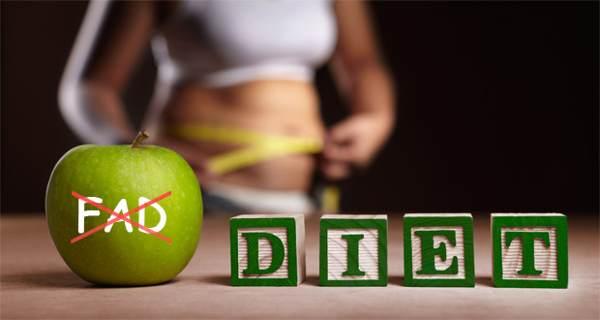Carbs are part of awell-balanced diet
“Carbs,” also known as carbohydrates, are one of the macronutrients, which are the compounds that give your body energy in the form of calories. Foods with carbs are digested into sugar, which provides your body with glucose, an important source of energy. Your body requires carbohydrates to function properly.
There are two main types of carbs: complex and simple. Complex carbohydrates are those that are less processed, more slowly digested, and high in dietary fiber. Simple carbohydrates are those that are more quickly digested. They are often added to processed and prepared foods in the form of refined sugars and processed sweeteners.
Some sources of carbohydrates are healthier than others. Learn how many carbs you need and which carbs to stay away from.
How many carbs do you need?
Depending on your age, sex, activity level, and overall health, your carbohydrate requirements will vary. According to the Mayo Clinic, 45 to 65 percent of your daily calories should come from carbohydrates. That’s equal to about 225 to 325 grams of carbs if you eat 2,000 calories a day.
It’s not always practical to count your carbs, so the American Diabetes Association offers a simple strategy to structure your plate at every meal to help you get the right amount of carbs:
- Draw an imaginary vertical line down the middle of your plate. Then draw a horizontal line across one half, so your plate is divided into three sections.
- Fill the big section with non-starchy vegetables, such as spinach, carrots, lettuce, green cabbage, or mushrooms.
- Fill one of the small sections with starchy vegetables, such as potatoes or winter squash, or grains, such as whole grain pasta or brown rice. Legumes, such as black peas or pinto beans, are also great options.
- Fill the other small section with protein. For example, you might choose low-fat options, such as skinless chicken or turkey, salmon or catfish, or lean cuts of beef.
- Add a small serving of fruit or low-fat dairy on the side.
- Choose foods that contain healthy fats such as olive oil, avocados, seeds, and nuts.
- Enjoy a low-calorie drink, such as water, unsweetened tea, or coffee.
What foods contain starch?
Starch can be found in starchy vegetables and grain products, such as:
- corn
- potatoes
- pumpkin
- winter squash
- green peas
- dried beans
- bread and bread products
- cereals
- grains
When you’re filling a small portion of your plate with grains or starchy vegetables, choose high-fiber, unprocessed options with little to no added sugar and fat. Starchy vegetables and whole grains are rich sources of minerals, vitamins, and fiber.
What foods contain fiber?
Fiber has many health benefits. According to the Mayo Clinic, a high-fiber diet can help prevent constipation, lower cholesterol, regulate blood sugar, and reduce your risk of heart disease and diabetes. If you’re 50 years old or younger, you should eat about 38 grams of fiber per day if you’re a man and 25 grams if you’re a woman. If you’re over the age of 50, you should eat about 30 grams per day if you’re a man and 21 grams if you’re a woman.
Dietary fiber can be found in:
- fruits
- vegetables
- whole grains
- nuts, seeds, and legumes
Look for breads, crackers, pastas, and other products that list whole grains as their first ingredient. Check the nutrition label; foods that have 3–5 grams of fiber or more are good high-fiber options. You can also serve steamed or boiled whole grains, such as brown rice, wild rice, buckwheat, millet, quinoa, and oats.
What foods contain sugar?
It’s good to get your carbohydrate intake from complex carbohydrates, such as starch and fiber, as well as from natural sugars like fresh fruits and some vegetables.
You should avoid refined and added sugars as much as possible. These foods provide “empty” calories, which means they’re high in calories but low in nutrients. Foods with added sugars tend to have fewer nutrients than foods with naturally occurring sugars.
Not sure what to avoid? Watch out for these sugar-laden sweeteners on nutrition labels:
- brown sugar
- corn sweetener
- corn syrup
- dextrose
- fruit juice concentrate
- fructose
- high-fructose corn syrup
- honey
- lactose
- invert sugar
- maltose
- malt syrup
- molasses
- raw sugar
- sugar
- sucrose
- syrup
Limit foods that contain these added sweeteners to the occasional treat. Remember that ingredients on food labels are listed by quantity, from most to least. Foods where these sweeteners appear higher in the ingredient list, or which contain multiple types of sugar, will have a higher content of added sugar.
Getting the right carbs can be easy
Eating the right types of carbs in the right amounts may seem easier said than done, but there are some simple guidelines you can follow to stay on the right track:
- Avoid sugary drinks, such as soda and fruit “ades.” Choose whole fruit over fruit juice.
- Eat whole grain breads, pastas, crackers, and cereals, rather than refined grain alternatives. Brown rice, whole barley, and oatmeal are also good whole grain choices.
- Replace white flour products such as white pastas and breads with whole wheat options, or choose less processed high-fiber grains as listed above.
What are the risks of cutting carbs?
If you’re trying to cut carbs out of your diet, be careful! Your body needs some carbs to work properly. If you suddenly restrict the amount of carbs you eat, you might experience symptoms such as:
- dizziness
- fatigue
- weakness
- headaches
- constipation
It’s best to follow a diet plan that focuses on healthy eating overall, rather than just restricting your carbs. Low-carb diets may promise to help you lose weight, but some of them can leave you nutritionally deficient. It’s always best to consult with your doctor or dietitian before you choose a weight-loss diet plan or change your eating habits. Your health team can help you learn how to get the right kind of carbs in your diet, while cutting empty calories.
- DON'T MISS
- The swimming pool is your new gym!
- Why you should avoid crash diets
- Eat chillies, almonds, olive oil, salmon and ginger to lose weight!
- Try High Intensity Interval Training (HIIT) to lose more weight!
- How to use Kalonji seeds for weight loss?
- Can your personality affect your weight loss? Yes it can!
- Tips to keep your new year’s resolutions this year
- 10 awesome fitness workouts to keep you in shape!
- Lose weight without exercising with green coffee beans!
- Multivitamin supplements cause weight loss!




